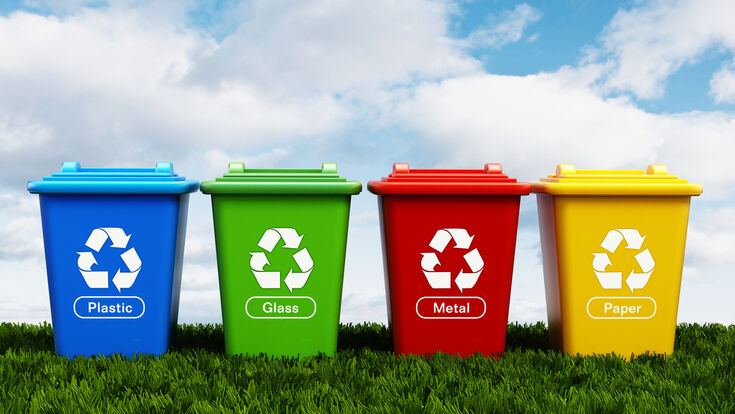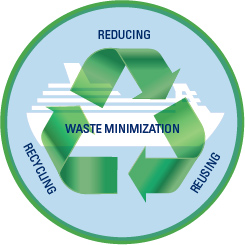Discovering Various Sorts Of Waste in Modern Waste Administration Systems
The contemporary landscape of waste administration entails browsing an intricate selection of waste kinds, each needing specialized handling and disposal approaches to minimize ecological effects. Community solid waste, contaminated materials, electronic waste, and organic waste each existing distinct difficulties and chances for resource healing. Ingenious options such as wise waste containers and waste-to-energy modern technologies are becoming crucial tools in boosting performance and sustainability. Recognizing these waste kinds is crucial for fostering public awareness and encouraging active participation in sustainable practices. What strategies can effectively deal with these different kinds of waste while advertising a round economic situation?
Community Strong Waste
Local solid waste, often described as home trash or waste, includes a variety of thrown out materials generated by household, industrial, and institutional resources within a municipality. This waste stream normally consists of items such as packaging, food scraps, lawn trimmings, paper, plastics, textiles, and thrown out home goods. The administration of municipal strong waste is a critical component of city planning and public wellness, demanding efficient collection, transport, and disposal systems.
Effective waste administration systems are designed to reduce environmental impact while optimizing source recovery. This usually entails a mix of techniques consisting of composting, landfilling, and recycling. Recycling programs target materials like paper, glass, metals, and particular plastics, diverting them from landfills and reintroducing them right into the manufacturing cycle. Composting organic waste, such as food scraps and lawn trimmings, not just minimizes landfill usage however additionally generates valuable soil modifications.
Municipalities have to additionally address the logistical and financial challenges connected with waste management. Carrying out pay-as-you-throw systems, improving public recognition, and buying modern technology can considerably enhance waste diversion prices. By incorporating these techniques, communities can foster lasting communities, lower greenhouse gas emissions, and preserve natural resources.
Hazardous Waste

Efficient unsafe waste management includes numerous important actions: identification, therapy, partition, and disposal. Partition ensures that harmful materials are kept independently from non-hazardous waste to stop cross-contamination.
Regulative structures, such as the Source Preservation and Healing Act (RCRA) in the USA, supply guidelines and requirements for harmful waste administration. Adherence to these policies, coupled with improvements in waste treatment technologies, is important in reducing the risks linked with contaminated materials.
Digital Waste
Electronic waste, typically referred to as e-waste, stands for a quickly growing obstacle in waste monitoring systems around the world. This kind of waste includes discarded digital tools and tools such as mobile phones, computers, tvs, and various other digital devices. The quick rate of technical development, coupled with decreasing product life expectancies and customer demand for the most up to date devices, has exponentially boosted the quantity of e-waste created yearly.
E-waste is particularly troublesome because of its complex composition, often containing hazardous compounds like cadmium, mercury, and lead, which posture significant ecological and health threats if not effectively handled. On the other hand, e-waste likewise contains valuable products such as silver, copper, and gold, which can be recovered and recycled. The double nature of e-waste-- both useful and hazardous-- demands specific handling, recycling, and disposal procedures.
Effective e-waste monitoring entails rigorous regulative structures, durable collection systems, and advanced recycling innovations. Public recognition and involvement are critical, as inappropriate disposal practices, such as unlawful disposing and casual their website recycling, intensify environmental try this site contamination and wellness risks. Improving e-waste management methods is important for minimizing eco-friendly effect and recovering valuable sources in a significantly electronic world.

Organic Waste
Organic waste, making up kitchen scraps, backyard trimmings, and agricultural deposits, represents a significant section of the worldwide waste stream. This kind of waste is eco-friendly, indicating it can be damaged down by microorganisms right into less complex natural compounds. Regardless of its capacity for natural disintegration, incorrect administration of organic waste can cause unfavorable environmental impacts, including the exhaust of greenhouse gases such as methane, which add to environment change.
Efficient monitoring of natural waste is critical for lessening these environmental effects (recycling lives services). Composting is an extensively taken on technique, transforming organic waste right into nutrient-rich garden compost that can improve dirt health and agricultural performance. In addition, anaerobic digestion is an arising modern technology that converts organic waste into biogas, an eco-friendly power source, and digestate, which can be utilized as plant food
Municipalities and waste administration entities need to execute robust organic waste collection and therapy programs to make best use of the reference benefits of these procedures. Public education and learning projects can additionally play an essential role in encouraging families and companies to separate organic waste from various other kinds of waste. By prioritizing the monitoring of organic waste, cultures can decrease garbage dump use, lower greenhouse gas emissions, and create beneficial byproducts for farming usage.

Cutting-edge Waste Monitoring
In the world of waste monitoring, innovative methods are transforming how cultures handle their refuse, aiming for sustainability and effectiveness. One noticeable advancement is the implementation of clever waste containers furnished with sensors that monitor fill degrees and optimize collection courses.
An additional significant development is the fostering of waste-to-energy (WtE) modern technologies. By transforming non-recyclable waste into functional power with procedures such as incineration and anaerobic digestion, WtE minimizes landfill burden and gives a sustainable power source. Moreover, advancements in chemical recycling permit the failure of complex plastics right into their initial monomers, allowing the development of brand-new, high-grade plastic products.
Furthermore, the round economic situation design is gaining grip, highlighting the style of products and systems that prioritize reusability and source efficiency. This holistic method urges sectors to minimize waste generation from the outset. With these ingenious approaches, contemporary waste management systems are not just attending to the prompt difficulties of garbage disposal however likewise paving the means for a more sustainable future.
Conclusion
A comprehensive understanding of metropolitan solid waste, dangerous waste, electronic waste, and natural waste, coupled with the execution of innovative waste administration remedies, is necessary for reducing ecological effects. Integrating innovations such as smart waste bins and waste-to-energy systems can improve efficiency and sustainability. Reliable waste management strategies not just foster resource recovery but likewise promote public awareness and engagement, inevitably adding to the advancement of a round economy.
The modern landscape of waste management involves navigating a complicated variety of waste kinds, each requiring specialized handling and disposal approaches to reduce environmental impacts. Metropolitan solid waste, hazardous waste, digital waste, and organic waste each existing distinct obstacles and opportunities for source recuperation.Digital waste, typically referred to as e-waste, stands for a swiftly growing difficulty in waste monitoring systems around the world. Via these cutting-edge methods, modern-day waste management systems are not just attending to the immediate challenges of waste disposal however also leading the way for a more lasting future.
A detailed understanding of local solid waste, hazardous waste, electronic waste, and natural waste, paired with the implementation of cutting-edge waste monitoring remedies, is necessary for minimizing ecological impacts. (recycling lives services)